Broken links are a fact of life for any website.
These small errors can stack up on your website and cause a ripple effect for visitors and your SEO performance. But finding and resolving broken link errors is easy if you know what to look for.
Use our interactive guides to see how you can find dead links and learn how you can fix them to improve your site’s performance.
Why Look for Broken Links on Your Site?
Finding and fixing broken links on your website is crucial for both user experience and SEO performance.
Potential clients or customers visit your website to find the information they need. A link that leads to an error page instead of the promised content is frustrating. And there are plenty of other pages on the web that will give them what they want without disrupting their browsing experience.
Broken links make your site seem unprofessional and untrustworthy.
People will leave your site if you have too many broken links. When they go, it sends signals to search engines that your site may be low-quality or unable to satisfy the searcher’s intent. This can lead to declining search engine traffic and rankings over time.
Search engines also view broken links in and of themselves as a negative signal.
When Google’s web crawler tries to index your site and encounters a broken link, it results in a crawl error. Too many crawl errors and Google may start to view your website as poorly maintained or unreliable.
Next, Broken backlinks lead to your site losing out on valuable link equity.
Link equity is the value passed from one page to another through hyperlinks. When another website links to your page, it passes along a certain amount of its authority. If the link breaks, link equity does not pass to your site. This can result in Google treating your site as a low-authority resource and lower search engine rankings.
There are three different types of broken links to look for on your website:
- Broken Internal Links: Broken links between two pages on your site
- Broken Backlinks: Broken links from someone else’s website to yours
- Broken Outgoing Links: Broken links from your website to someone else’s
There are painstaking manual methods for finding these broken links, but we recommend using an SEO tool to make it easy.
For the examples in this article, we’ll use Ahrefs. It is an industry standard SEO tool that can help you spend less time looking for links so you can get to fixing them. It also has a ton of additional features that are helpful for things like keyword research, SEO audits, and more.
The methods below each find a different type of broken link error or can help uncover unique data. We recommend using all of them so that you can find every error on your site at once.
1. Finding Broken Internal Links Using Ahrefs Site Audit
Broken internal can happen for a few different reasons.
The most common cause is when moving or deleting a page without setting up a redirect. Changes to your content management system or plugins that generate links can also cause broken links.
Human errors—like typos in the hyperlink—are another common culprit.
Ahefs Site Audit is an excellent way to find broken internal links on your site. All it takes is running a website audit for your domain. Once the site audit is complete, you can follow the walkthrough below to identify broken pages.
The great thing about Site Audit is that you can schedule it to run on a regular basis. This makes it easy to find internal link errors soon after they crop up.
How to Fix Broken Internal Links
You have the most options and control when it comes to fixing broken internal links.
The three levers you can pull here are:
- Updating the link
- Redirecting the link
- Removing the link
If the cause of your internal link error is a typo, all you need to do is update the link.
A 301 redirect is best If you moved or deleted a page you were previously linking to. You should redirect the link to the new page if all you did was move the old one. If you deleted the old page instead of moving it, then set up a redirect to a related page.
The final option is to remove the broken link entirely. This is only a good idea in cases where there are no relevant pages on your site to redirect the link towards.
2. Finding Broken Backlinks Using Ahrefs Site Explorer
Broken backlinks happen when another website links to a broken page on your site. The most common cause is when you delete or move a linked page without putting a proper redirect in place.
A backlink from another domain to a broken page will not pass link equity to your website. That can drag your SEO performance down.
The good news is the issue is that finding and fixing these errors is in your control.
While Ahrefs Site Audit is great for finding broken internal links, you’ll need to turn to another tool in the Ahrefs suite to find broken backlinks. This time, you’ll need to use Ahrefs Site Explorer.
Here’s how to find instances of external pages linking to broken pages on your site:
Finding this class of broken links will help you recover some of the link equity you’ve been missing out on. You may see some improvement in SEO performance if the backlinks are from reputable and relevant sources.
How to Fix Broken Backlinks
Broken backlinks are less in your control than broken internal links. You have two levers to pull here:
- Redirecting the link
- Asking the referring domain to update their link
Redirecting the link is the easier of the two. You can find the broken page on your site and set up a redirect to another relevant page. This will preserve some link equity from the backlink to your website.
But sometimes the backlink is only relevant to the content that was on the page you moved or deleted.
Reaching out to the owners of the other site may be your best option in this case. You can ask them to update their links and provide them with the updated URL. Finding the right person to contact can be hard, but it can sometimes be worth a shot to ask. Redirecting is still an option if you don’t get a reply.
3. Finding Broken Outgoing Links Using Ahrefs Site Explorer
Broken outgoing links are links on your website that point to external pages that no longer exist or have moved. This type of broken link doesn’t have as much of an SEO impact as the last two, but fixing them is still important for a good user experience.
For example, say you wrote a blog post and cited one of your claims with an external link. Later, the page you linked to is moved or deleted. Now, when visitors to your site follow that link, they have no way to trust or verify your claim.
Broken outgoing links can frustrate site visitors and give the impression that your site is not well-maintained.
Ahrefs Site Explorer has a built-in report to help you find where you link to a broken page on someone else’s site. The walkthrough below will show you how to find this report.
How to Fix Broken Outgoing Links
Fixing broken outgoing links is another simple fix. You have two options to fix these issues:
- Changing the link to a different page
- Removing the link
The best thing to do when a page you linked to is no longer available is to find a different source. The information you cited could be elsewhere on the site you were linking to, so you could start there. Or you could find an alternate resource and change your link to point to that.
If there is no replacement at all for the source that you were linking to, you may have to remove the link.
4. Browser-Based Link Checker Tools
The methods above do a great job of helping you find different kinds of broken links, but they aren’t perfect. Some browser-based link checkers can help you uncover anything the tools above may have missed. At the very least, a quick check can provide you some peace of mind.
There are a few different broken link checkers out there, but we recommend using brokenlinkcheck.com. Here’s how to get started:
There are some real advantages to using this tool. It’s free to use in your browser and relatively fast. It also does a great job of uncovering broken links caused by typos. What’s even better is that it presents these errors in a digestible format.
There are disadvantages, though. The free version does not allow you to export the tool’s findings. Its crawling ability is also limited to a cap of 3000 pages.
That means larger sites may not get as much use out of it as smaller ones.
Using a browser-based link checker is a way to double check the work you did in the methods above. These tools can uncover broken internal links and broken outgoing links. The same options for fixing those issues outlined above will apply here.
Combining these four methods for finding broken links sets you on the path to fixing a common issue facing many sites. Using each one will help you improve your site’s performance both with people and search engines.
Final Thoughts: Conquering Broken Links
Keeping your website free of broken links is critical.
Fixing all broken links creates a seamless user experience and can help your site’s performance on search engines. Keeping an eye out for broken links is an essential part of a good website maintenance routine.
Fixing broken links is just one part of actively maintaining your site. If you want to reduce technical errors and get the most out of your site, consider hiring an experienced SEO professional.
At Rankings.io, we specialize in helping law firms build their online presence through SEO. We understand the nuances of successful law firm marketing campaigns. Whether you need help with broken links or there’s a bigger problem to solve, we’re here to help you. Contact us today to learn more.
The post 4 Methods for Finding Broken Links on Your Website (and How to Fix Them) appeared first on Rankings.




